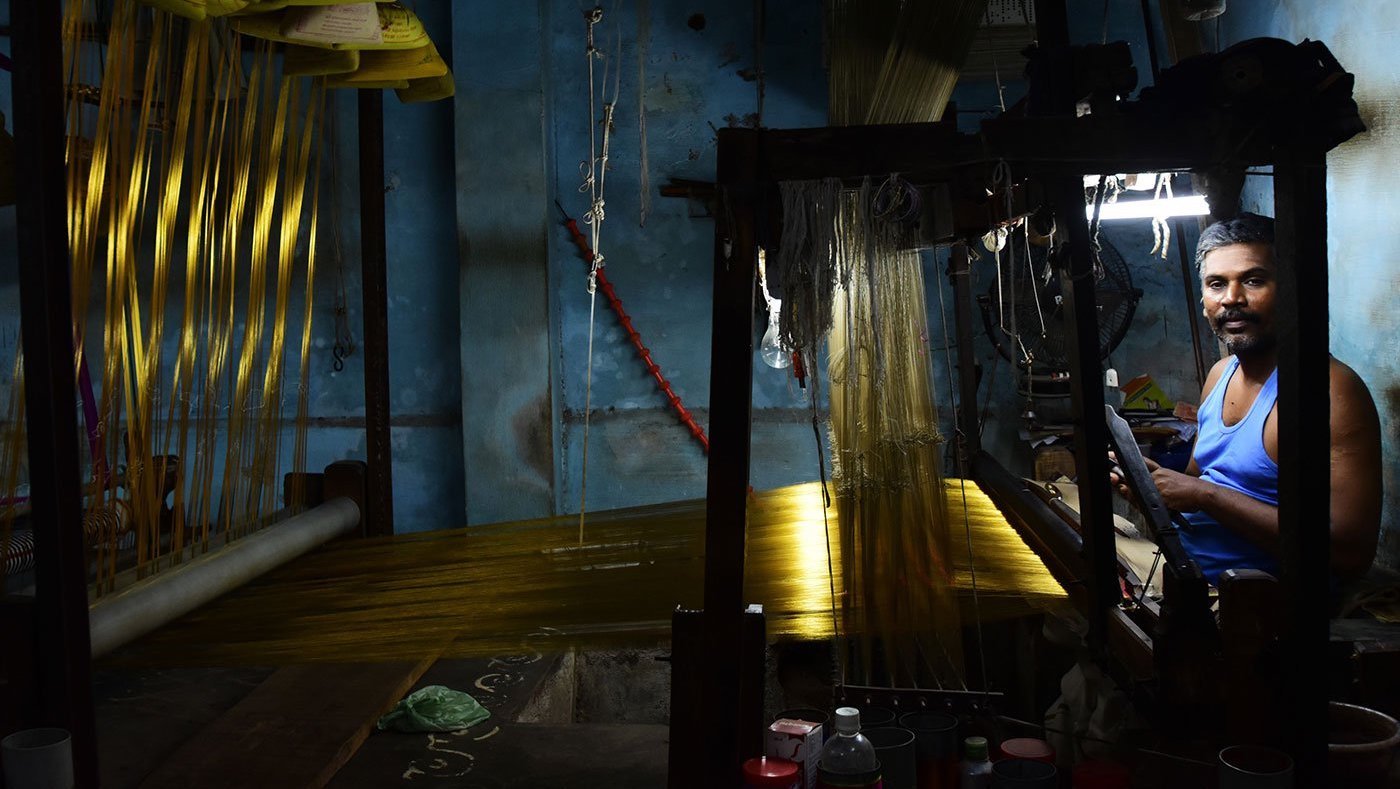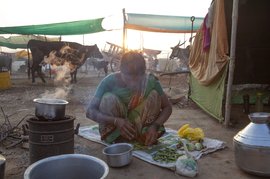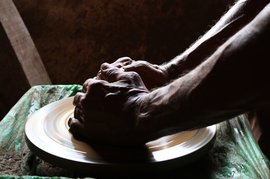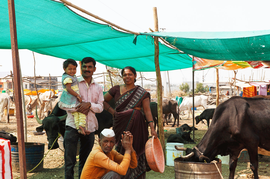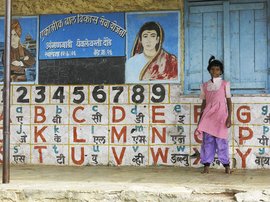ओन्नुपुरम में दोपहर की हवा के माध्यम से हथकरघा पैडल की लयबद्ध आवाज़ें गूंज रही हैं। “सुबह 5 बजे आएं और हमें रेशम के धागों पर काम करते हुए देखें,” 67 वर्षीय एमके गोधंडबणी मुझसे कहते हैं। कच्चे और रंगहीन रेशमी लार्वा के धागे के जो बंडल ओन्नुपुरम में प्रवेश करते हैं, जिस पर यहां गोधंडबणी और अन्य बुनकर काम करते हैं, 150 किलोमीटर दूर, चेन्नई के बड़े शोरूम और अन्य बाज़ारों में आलीशान, रंगीन छह-गज़ की साड़ियों के रूप में पहुंचते हैं।
तमिलनाडु के तिरुवन्नामलाई जिले के पश्चिमी अरणी ब्लॉक के ओन्नुपुरम गांव के अधिकांश बुनकर परिवार एक-दूसरे के सीधे या विवाह के माध्यम से रिश्तेदार हैं। लगभग हर घर में कम से कम एक करघा है, जो पीढ़ियों से चला आ रहा है। “हमारे बच्चे बाहर जाकर पढ़ते हैं लेकिन बुनाई की कला भी सीखते हैं, यह हमारी परंपरा है,” 57 वर्षीय देवसेनाथिपति राजगोपाल कहते हैं, जो अपने 16 वर्षीय बेटे को एक चमकदार गुलाबी रेशम की साड़ी बुनने में मदद कर रहे हैं।
विभिन्न सहकारी समितियां या छोटे पैमाने की निर्माण इकाइयां, उनमें से ज्यादातर अरणी ब्लॉक में स्थित बुनकर परिवारों द्वारा स्थापित की गई हैं, बुनकरों से साड़ियां ख़रीदती हैं और उन्हें ब्रांडेड कंपनियों और शोरूमों में वितरित करती हैं। ये ग्राहक बुनकरों को लोकप्रिय मांग के आधार पर डिज़ाइन प्रदान करते हैं, और अक्सर आधुनिक रूपांकन पारंपरिक डिज़ाइनों की जगह ले लेते हैं।
बदले में, बुनकर अच्छा पैसा कमाते हैं। सरस्वती ईश्वरायन पावु पुनाइथल को ठीक करती हैं। यह आमतौर पर महिलाओं द्वारा किया जाता है, जो बुनी जाने वाली साड़ी के बाना के लिए करघे पर 4,500-4,800 व्यक्तिगत धागे की लड़ी को लपेटती हैं। ऐसे प्रत्येक ताना के लिए उन्हें सहकारी समितियों या जिन परिवारों ने उन्हें काम पर रखा है उनके द्वारा 250 रुपये दिये जाते हैं, और उन्हें एक महीने में छह से आठ ऐसे काम मिल जाते हैं।
यहां के बुनकर सरल डिजाइन वाली चार साड़ियों की बुनाई करके आमतौर पर 2,500 रुपये कमा लेते हैं। “हम सप्ताह के सभी सात दिन काम करते हैं। हमारी एकमात्र छुट्टी पूर्णिमा के दिन होती है, महीने में केवल एक बार,” हथकरघे से अपनी आंख हटाए बिना सरस्वती गंगाधरन कहती हैं। “यह वह दिन होता है जब हम भगवान को श्रद्धांजलि अर्पित करते हैं जिसने हमें भाग्यशाली बनाया है।” अन्य बुनकरों की तरह सरस्वती को भी सहकारी समितियों से साड़ी के ऑर्डर मिलते हैं। वह एक महीने में 15 से 20 साड़ियां बुनती हैं, और लगभग 10,000 रुपये कमाती हैं।
“इसी से हमारा घर चलता है और हम इसे जाने नहीं देना चाहते हैं। अगर हम आराम करेंगे, तो इससे कमाई का नुकसान होगा,” जगदेशन गोपाल कहते हैं जो सुनहरी ज़री वाली भारी साड़ी की बुनाई कर रहे हैं।
इस फोटो स्टोरी का एक अलग संस्करण 28 फरवरी, 2018 को द पंच पत्रिका में प्रकाशित हुआ था।
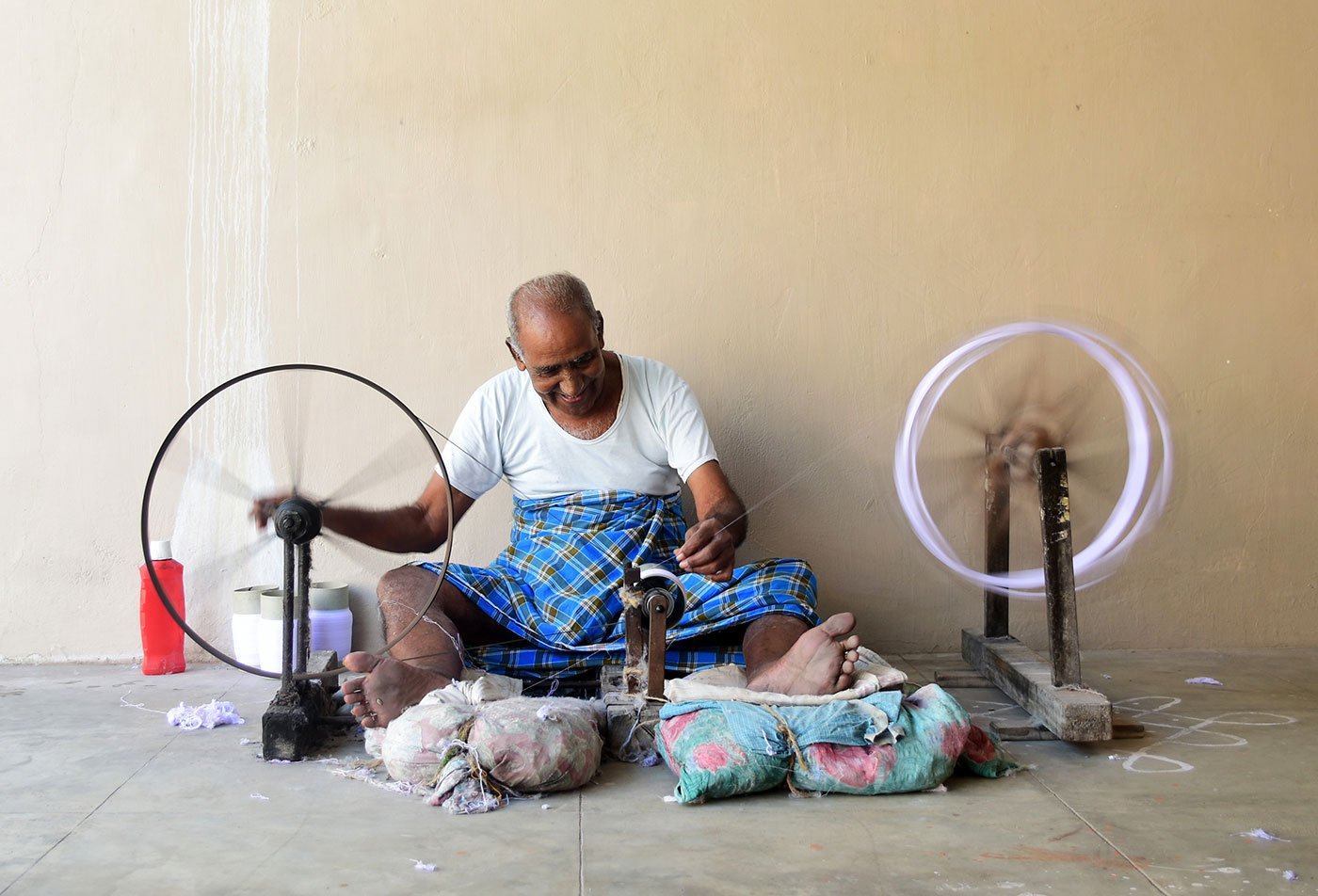
बालकृष्ण कुप्पुस्वामी चरखे पर सूत कात रहे हैं
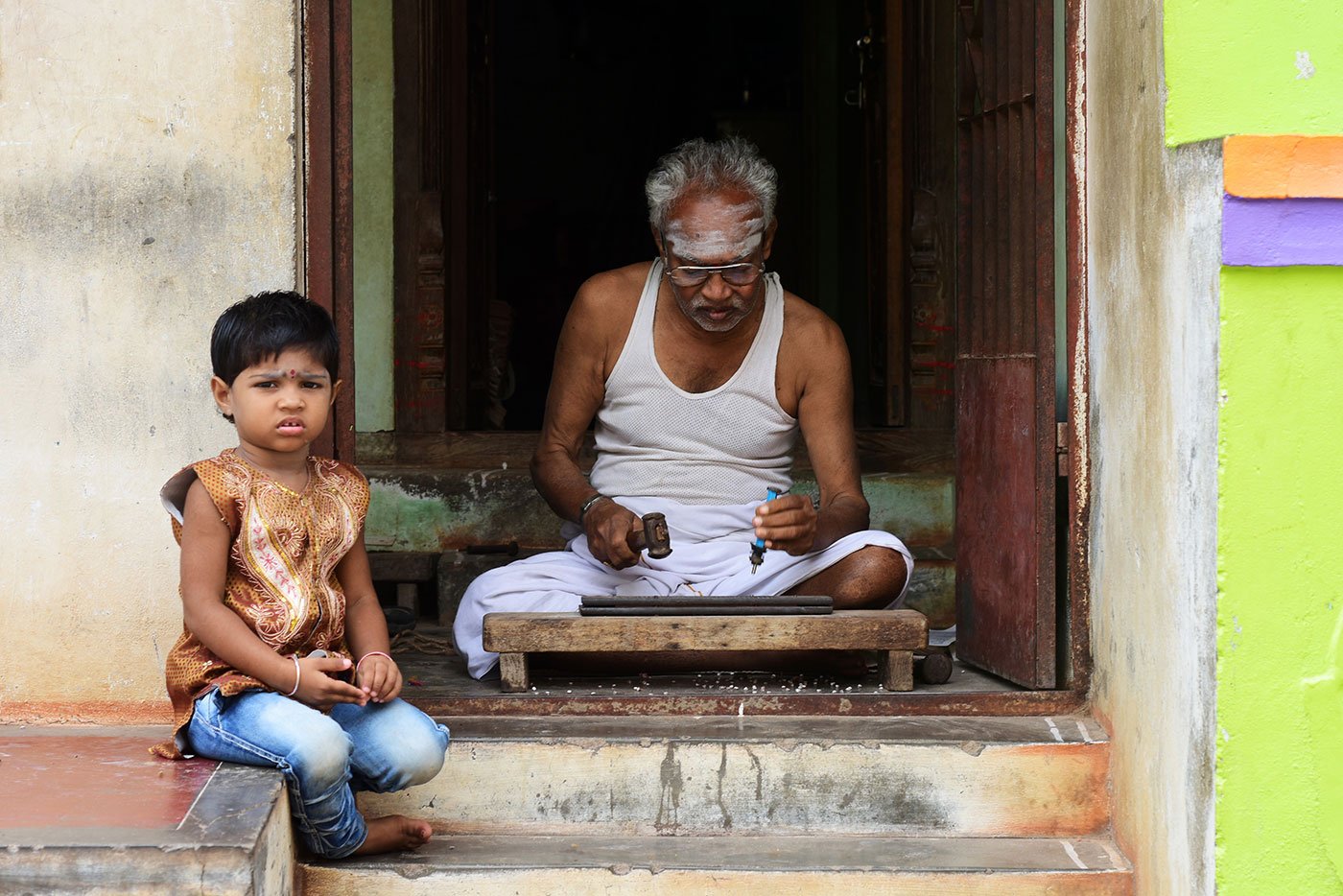
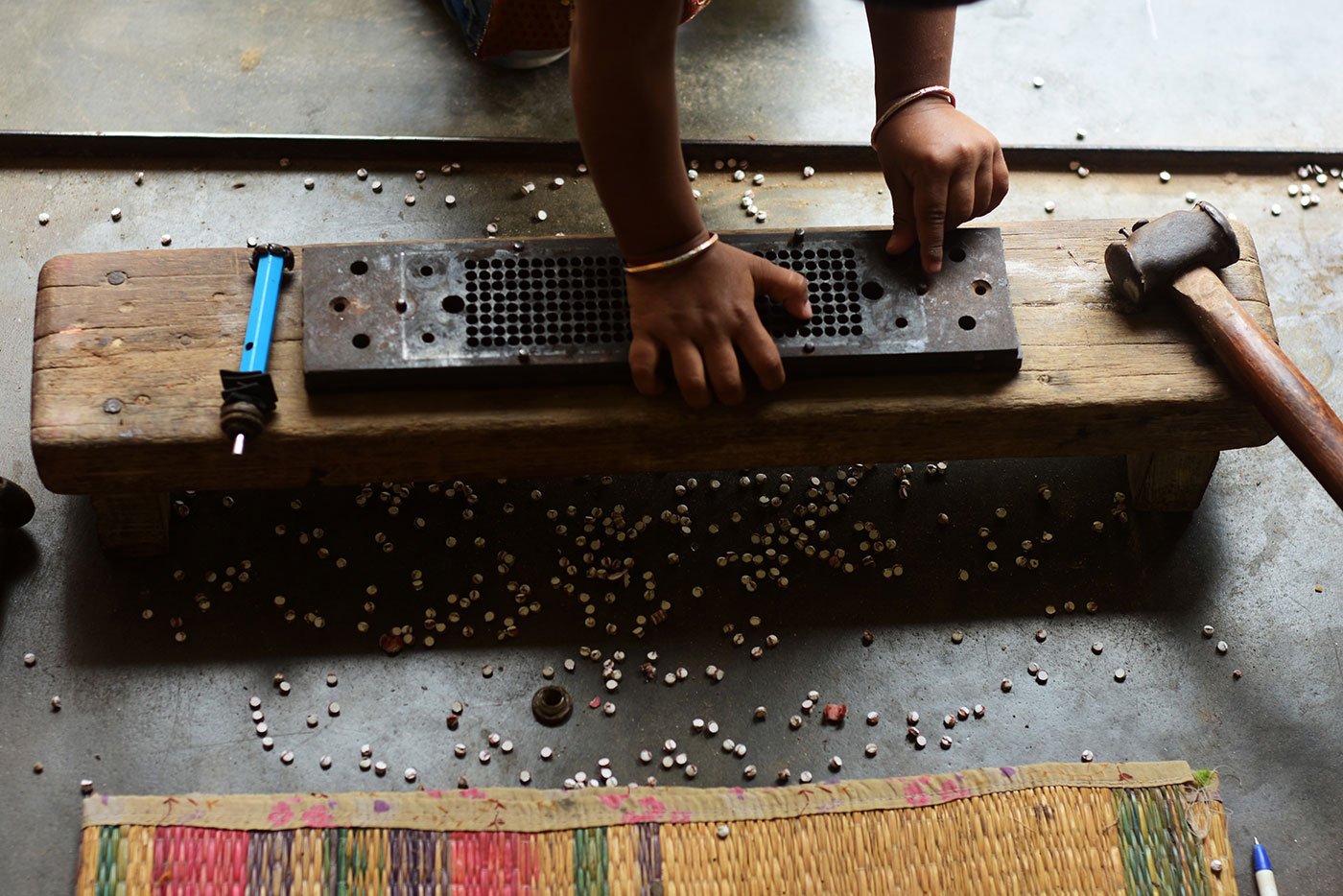
बाएं: वेंकटेशन पेरुमल ओन्नुपुरम के कुछ ऐसे कारीगरों में से एक हैं , जो चित्रकारी और ग्राफ़ शीट पर छेद करके हथकरघा बुनकरों के लिए अभी भी डिजाइन टेम्पलेट बनाते हैं – जो उनके पिता द्वारा उन तक पहुंचा है। कई अन्य उदाहरणों में, इसकी जगह कंप्यूटर सॉफ्टवेयर और प्रिंटिंग ने ले ली है। दाएं: ओन्नुपुरम के बुनकर समुदाय में युवा पीढ़ी के कई लोग कम उम्र में ही सीखना शुरू कर देते हैं
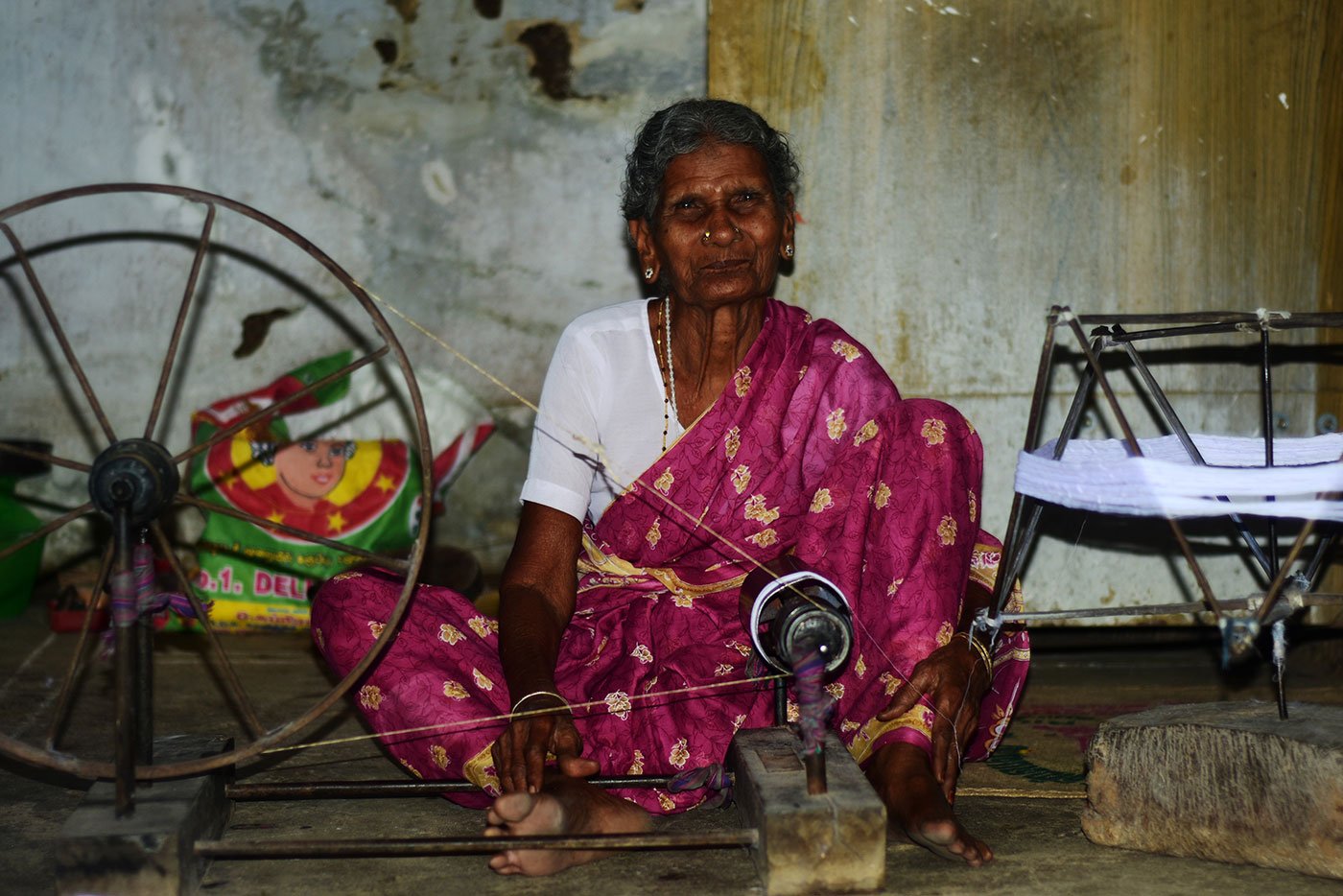
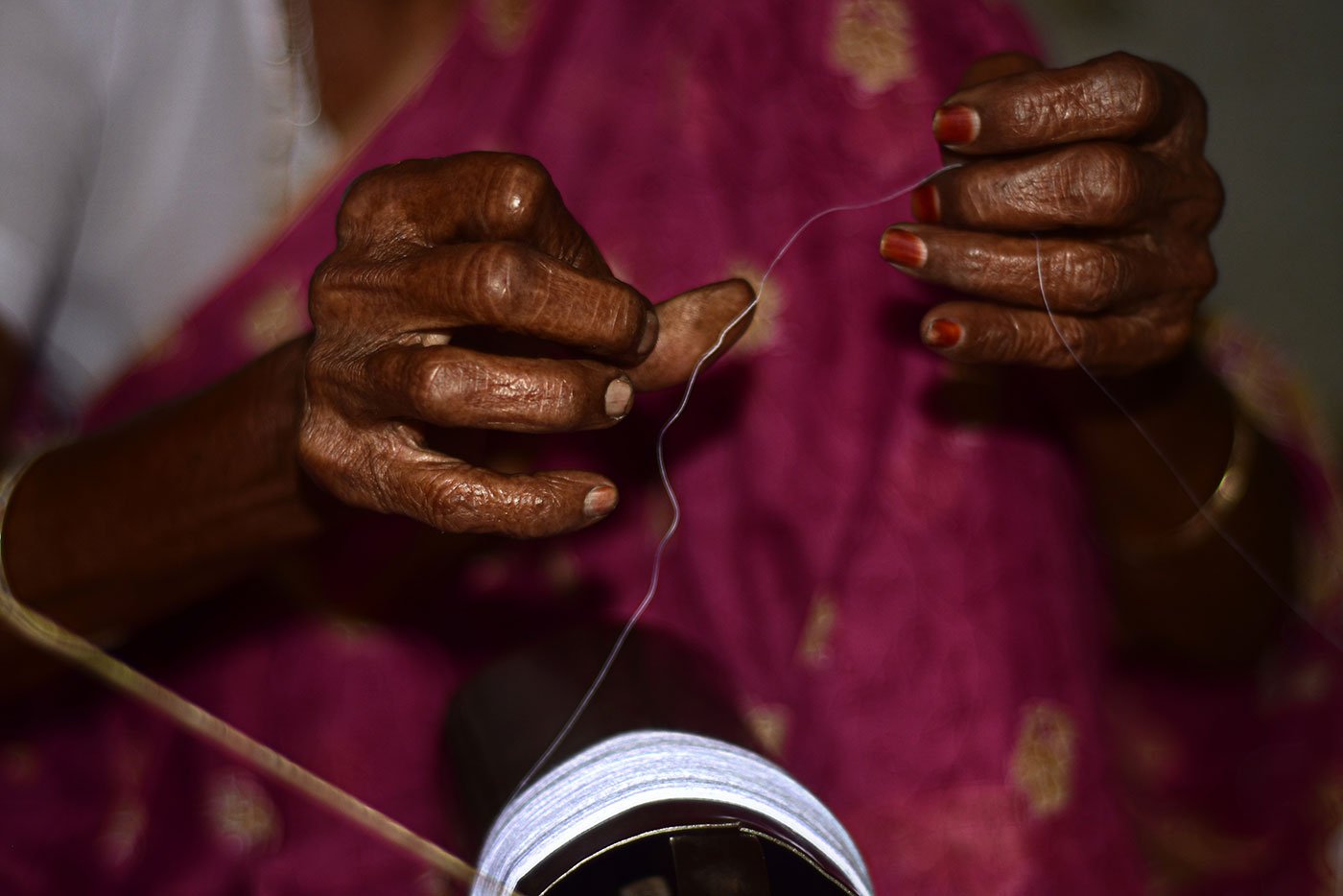
शकुंतला , जो कि कम से कम 80 साल की हैं, चरखे पर सूती धागे की कताई कर रही हैं; वह यह काम 60 वर्षों से कर रही हैं
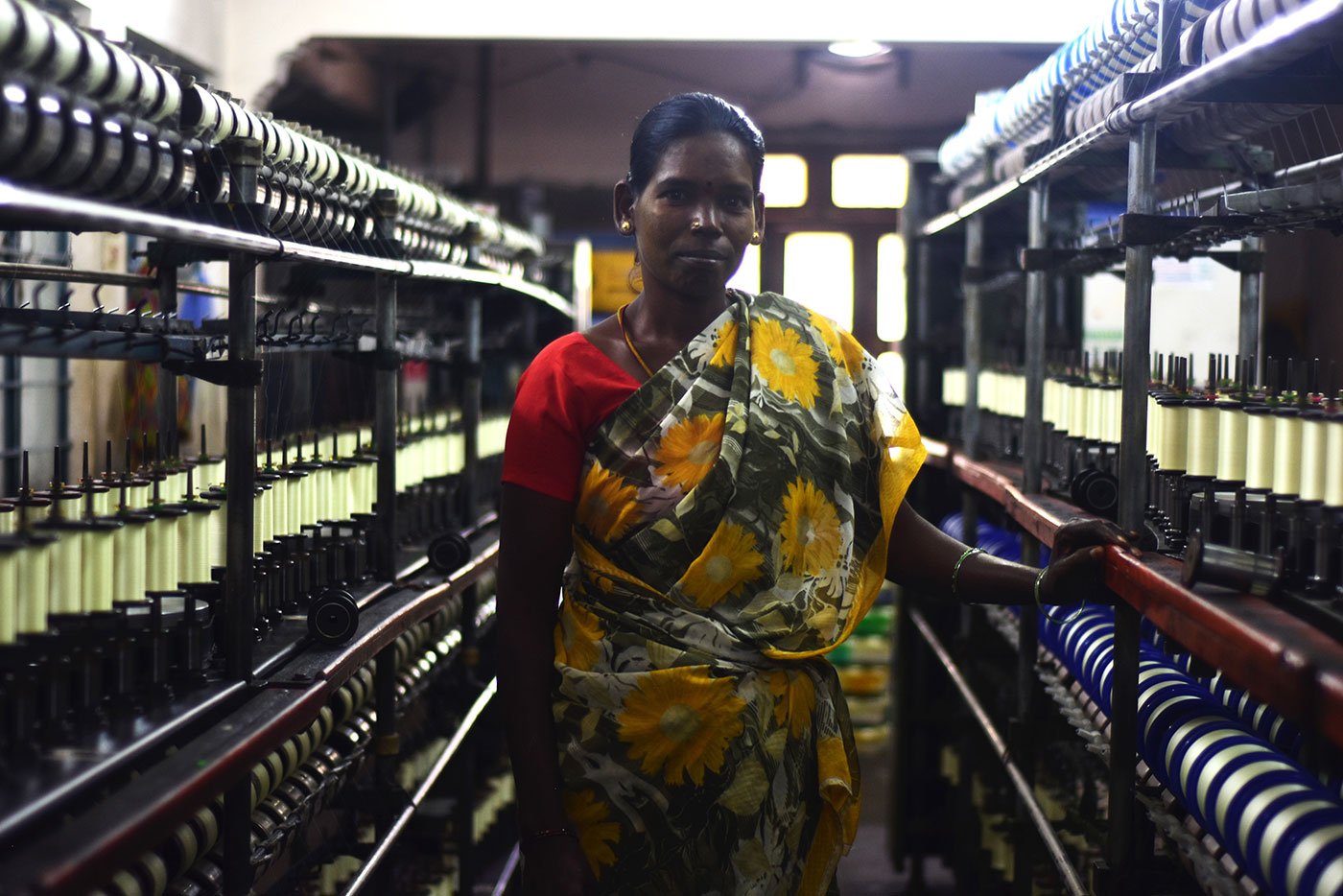
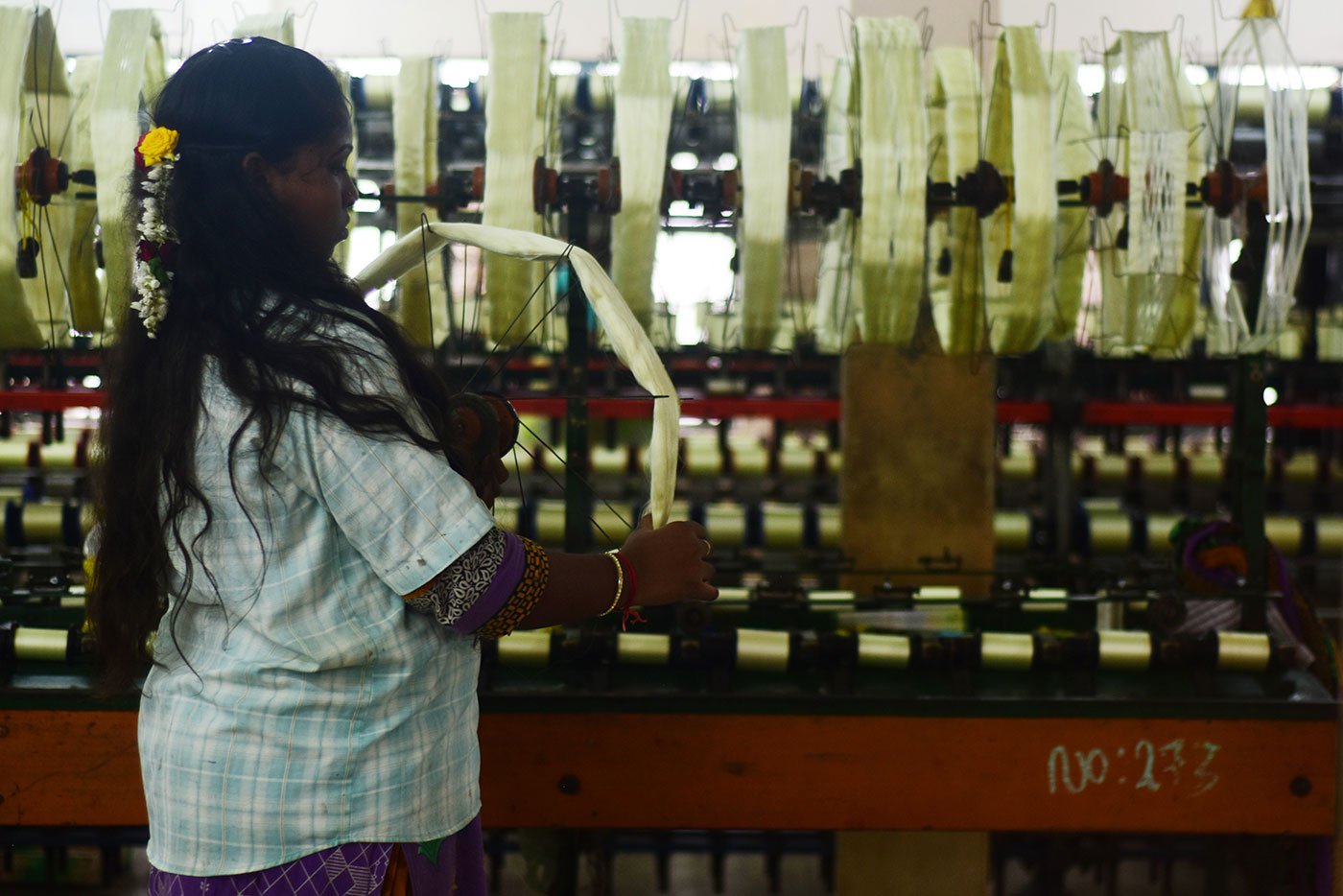
बाएं: धागा बनाने वाली एक छोटी इकाई में काम करने वाली शांती दुराईस्वामी, इस इकाई में मशीनें लगभग 90 डेसीबल शोर उत्पन्न करती हैं। दाएं: धागे के कारखाने में एक अन्य श्रमिक कताई के चरखे पर दुबारा धागा चढ़ा रही है
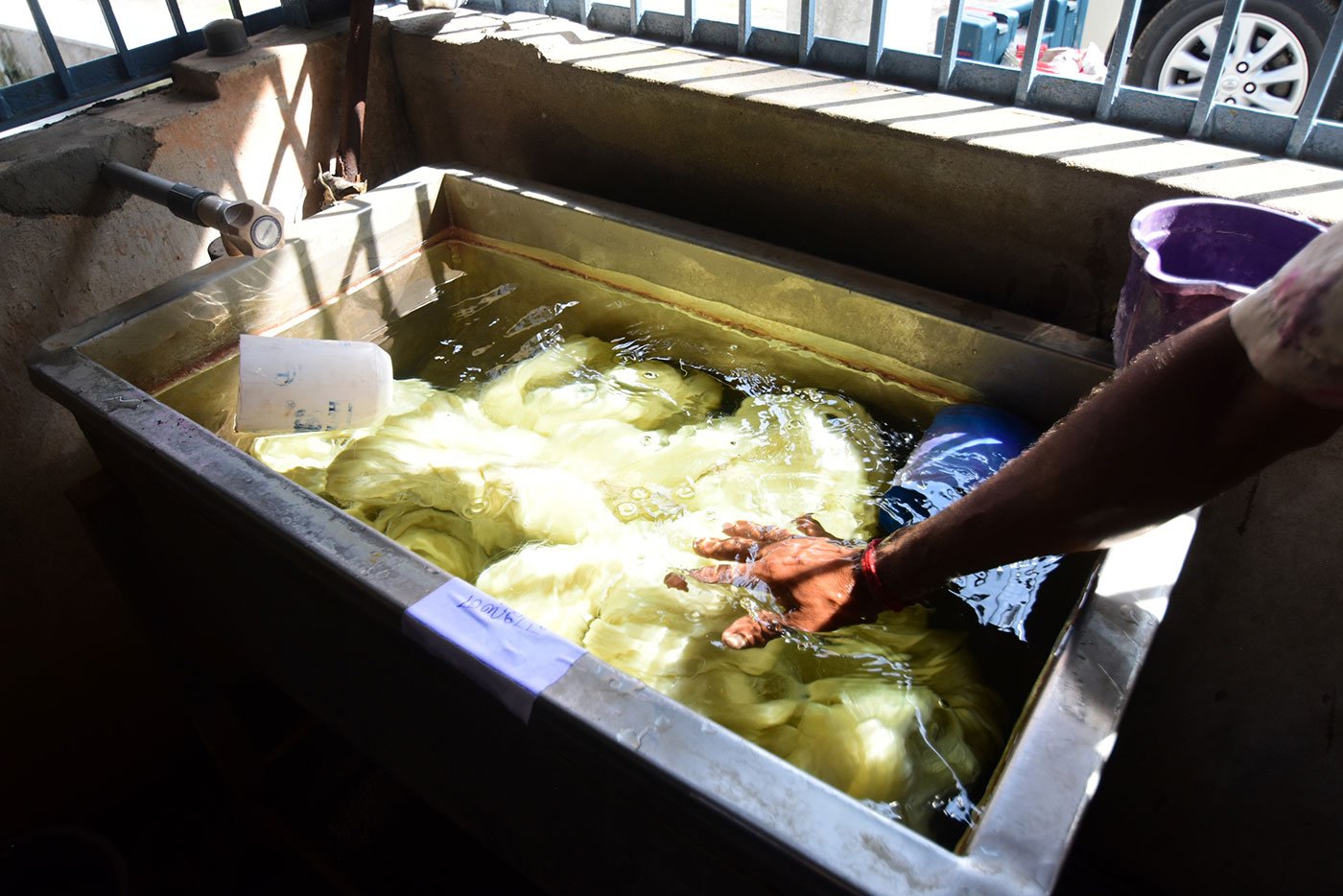
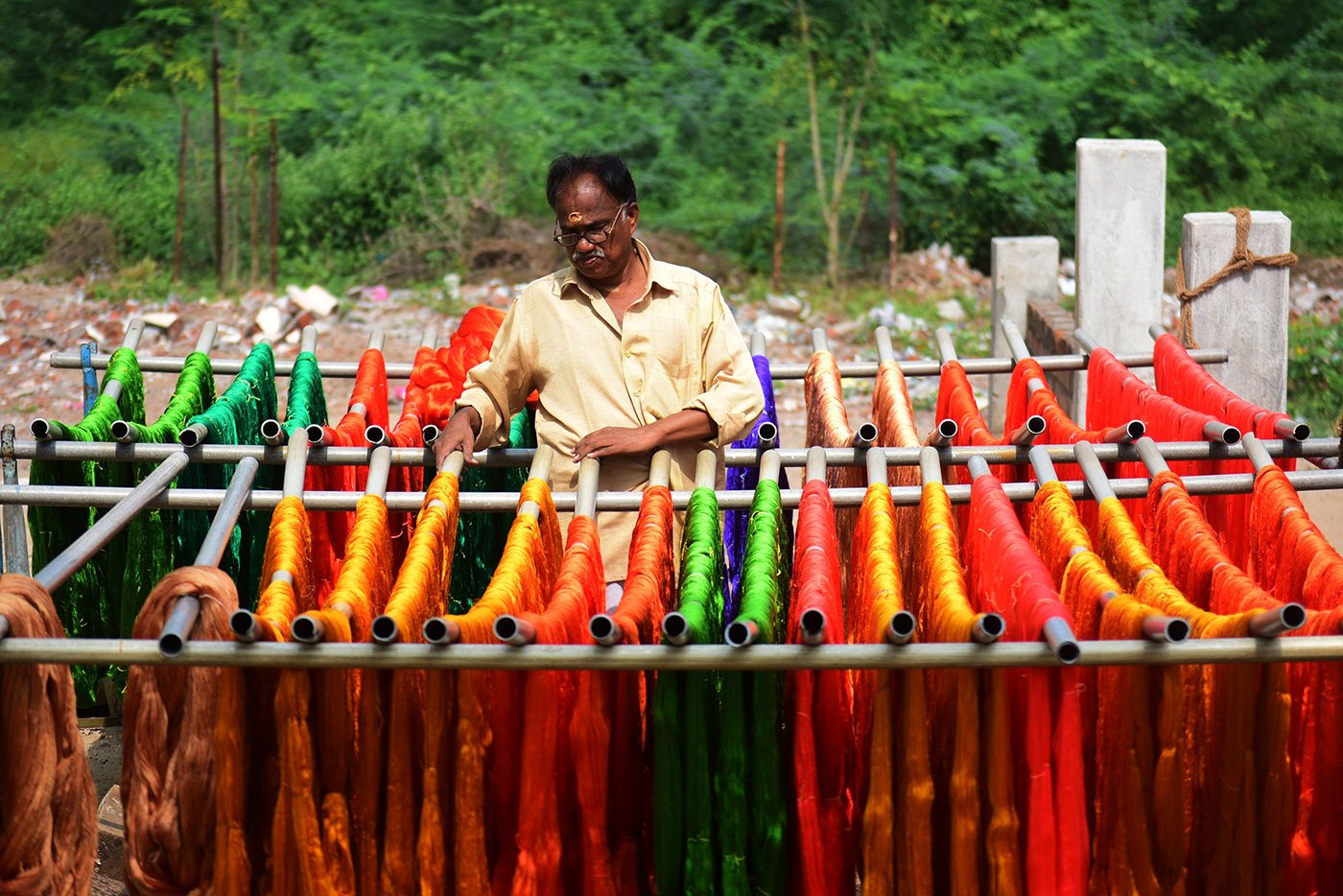
दाएं: एक मज़दूर रंगने से पहले धागे को पानी में भिगो रहा है। काता गया धागा साड़ी की लंबाई के बराबर अलग किया जाता है और कॉटन कैंडी पिंक , पैरट ग्रीन आदि चमकीले रंगों में रंगा जाता है। रंगे हुए धागे को तैयार करने में 2-3 दिन लगते हैं। धागे को रंगने वाले मज़दूरों को आमतौर पर तीन व्यक्तियों की टीम के रूप में काम पर रखा जाता है और प्रत्येक रंगरेज़ जिस दिन उसे काम के लिए बुलाया जाता है, उस दिन 200 रुपये कमाता है। दाएं: 58 वर्षीय अरुणाचलम पेरुमल धागे को सुखा रहे हैं। वह 12 साल की उम्र से ही इस धंधे में हैं
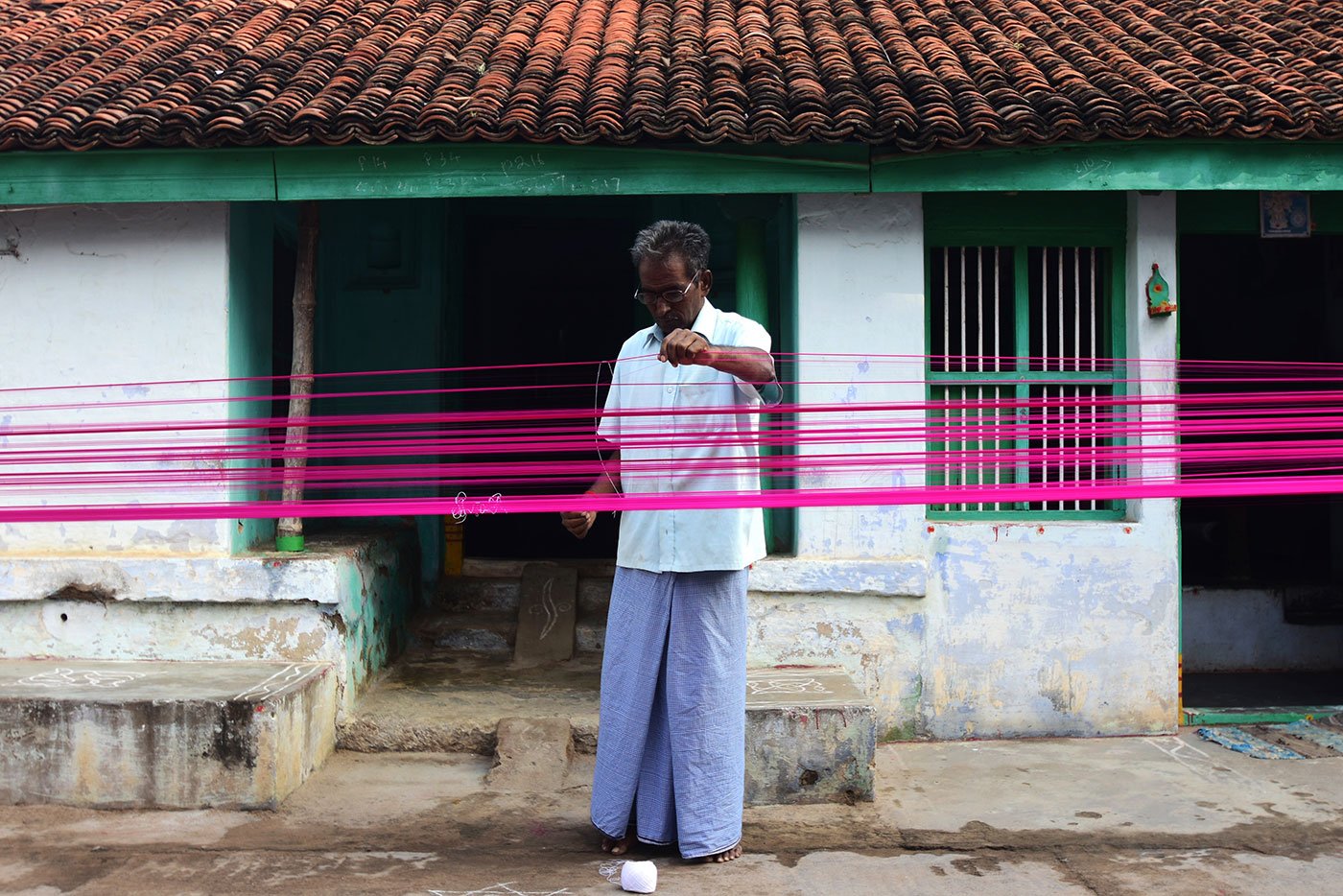
एमके गोधंडबणी करघा के लिए साड़ी का ताना तैयार कर रहे हैं
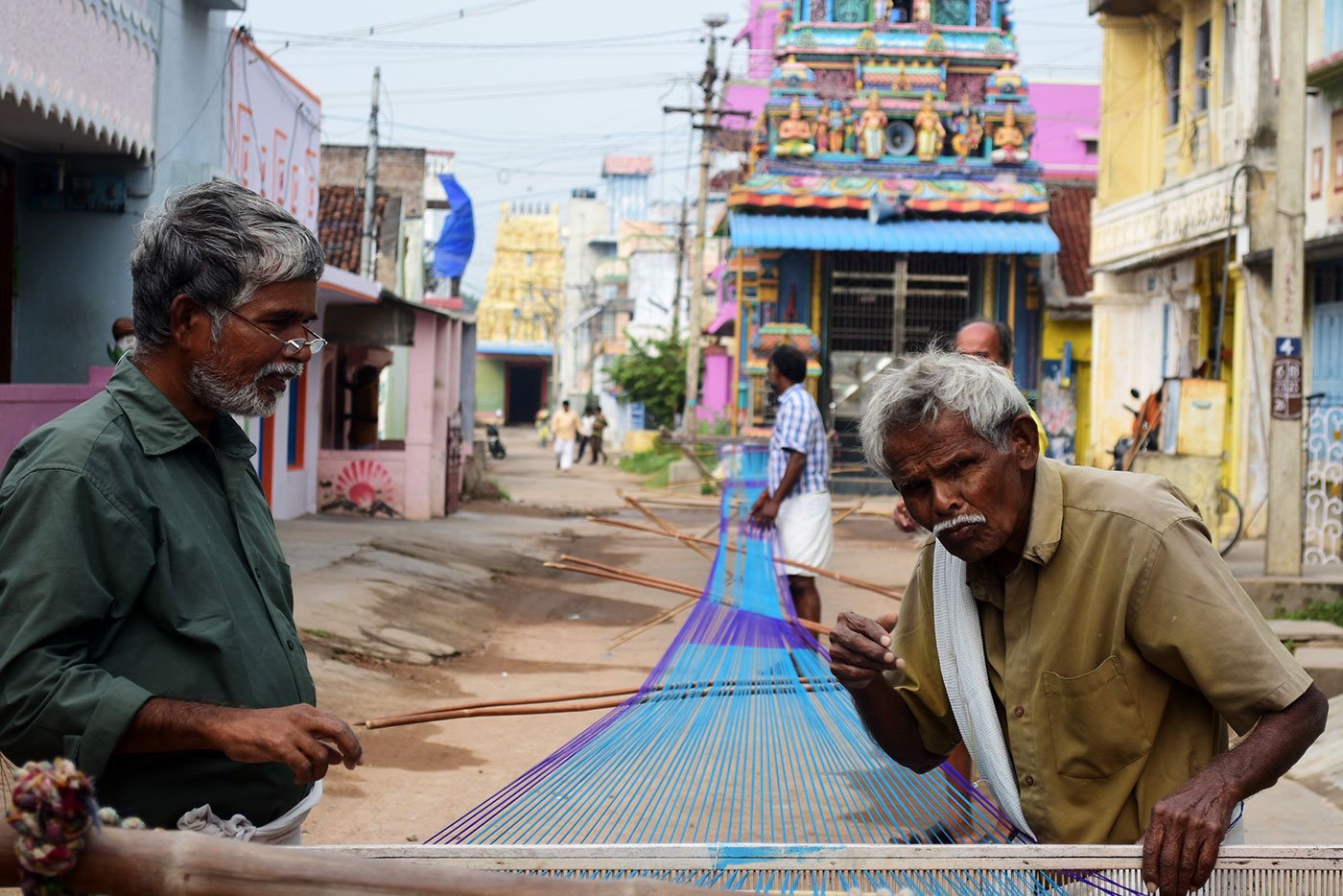
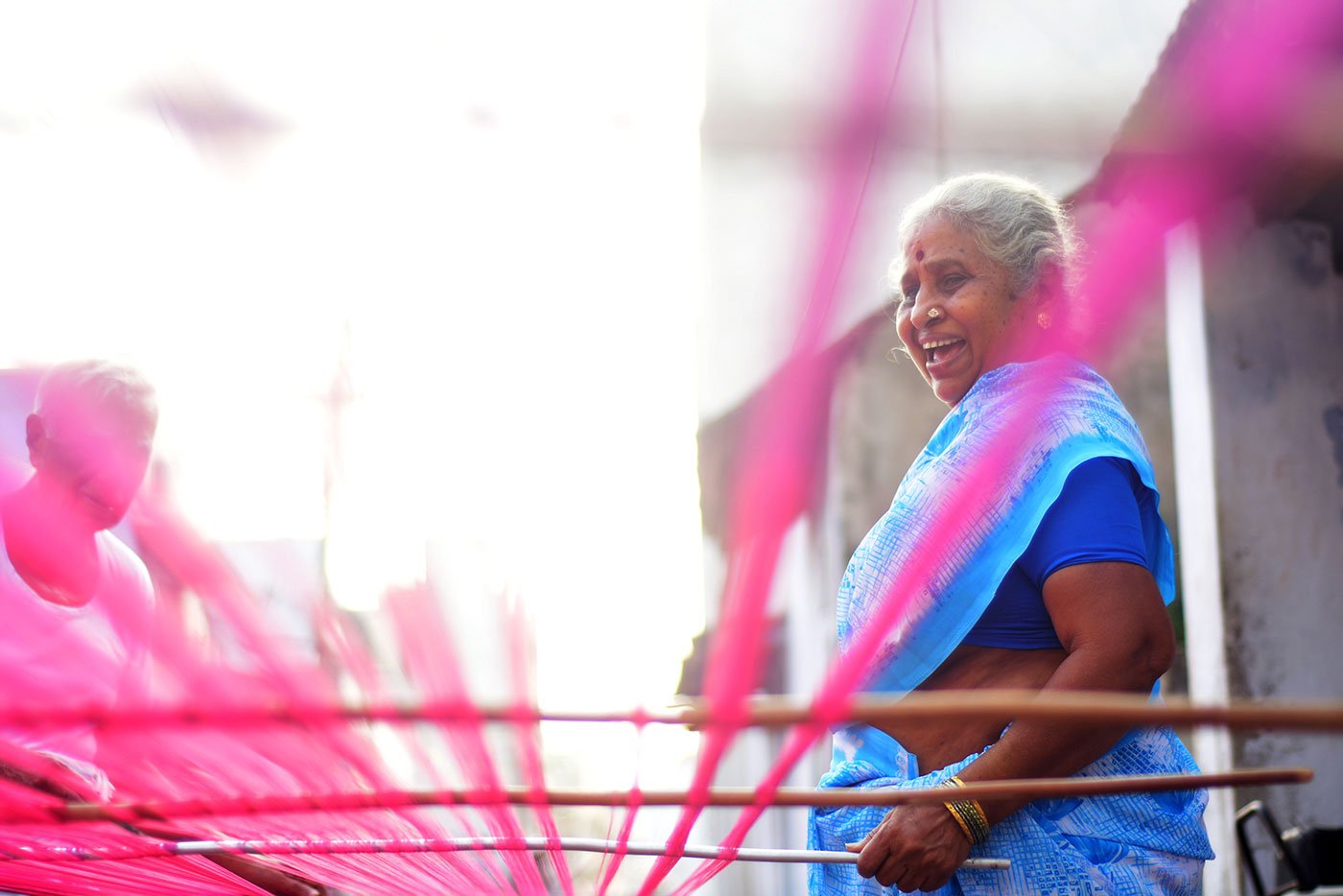
मनोन्मणि पुन्नकोडी और उनके परिवार के सदस्य सुबह में ताना तैयार कर रहे हैं। करघे को चावल के पानी से धोया जाता है। स्टार्चयुक्त पानी धागे को जल्दी और कुरकुरे ढंग से अलग करने में मदद करता है। उन्हें करघा के लिए एक विशेष गिनती में अलग किया जाता है
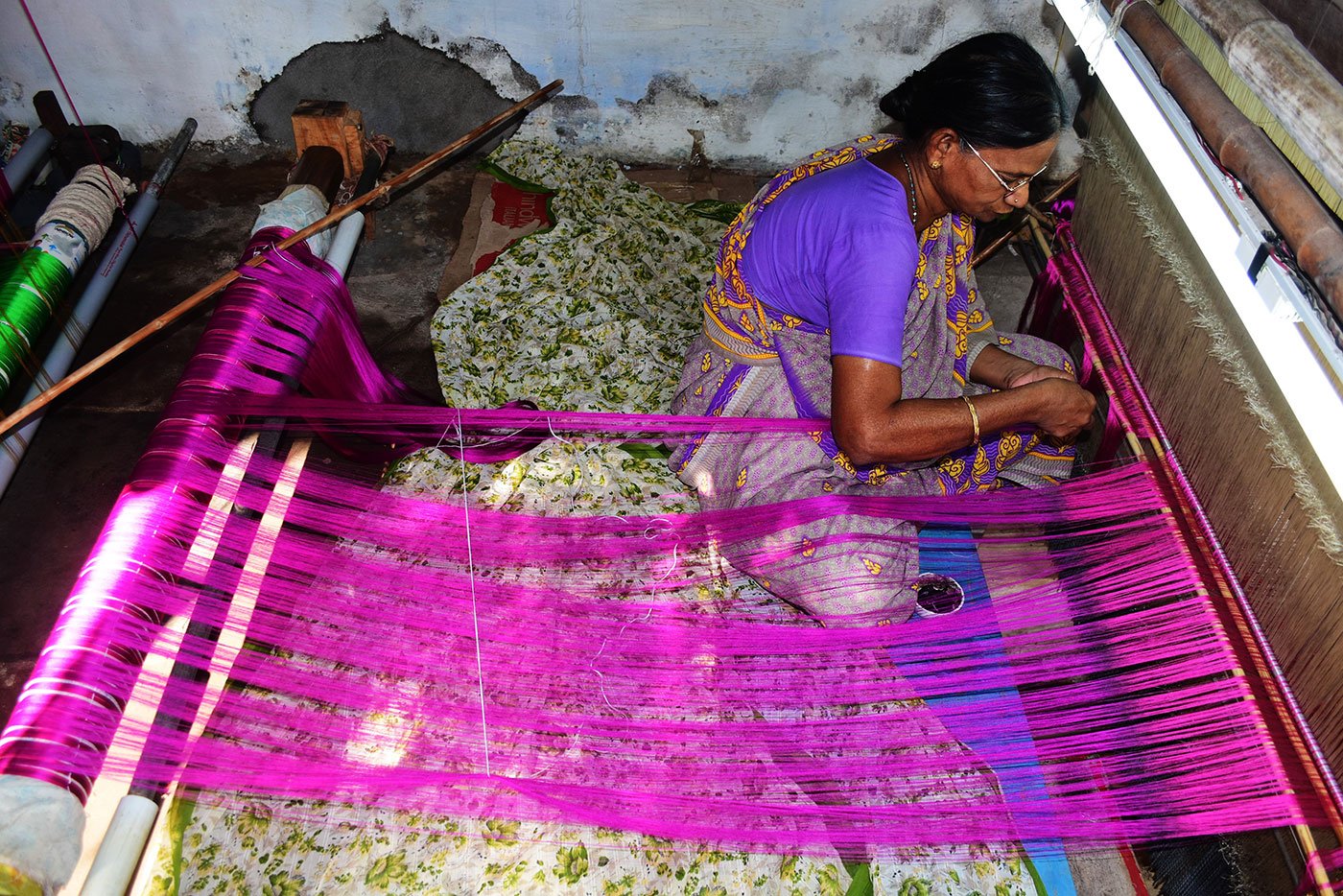
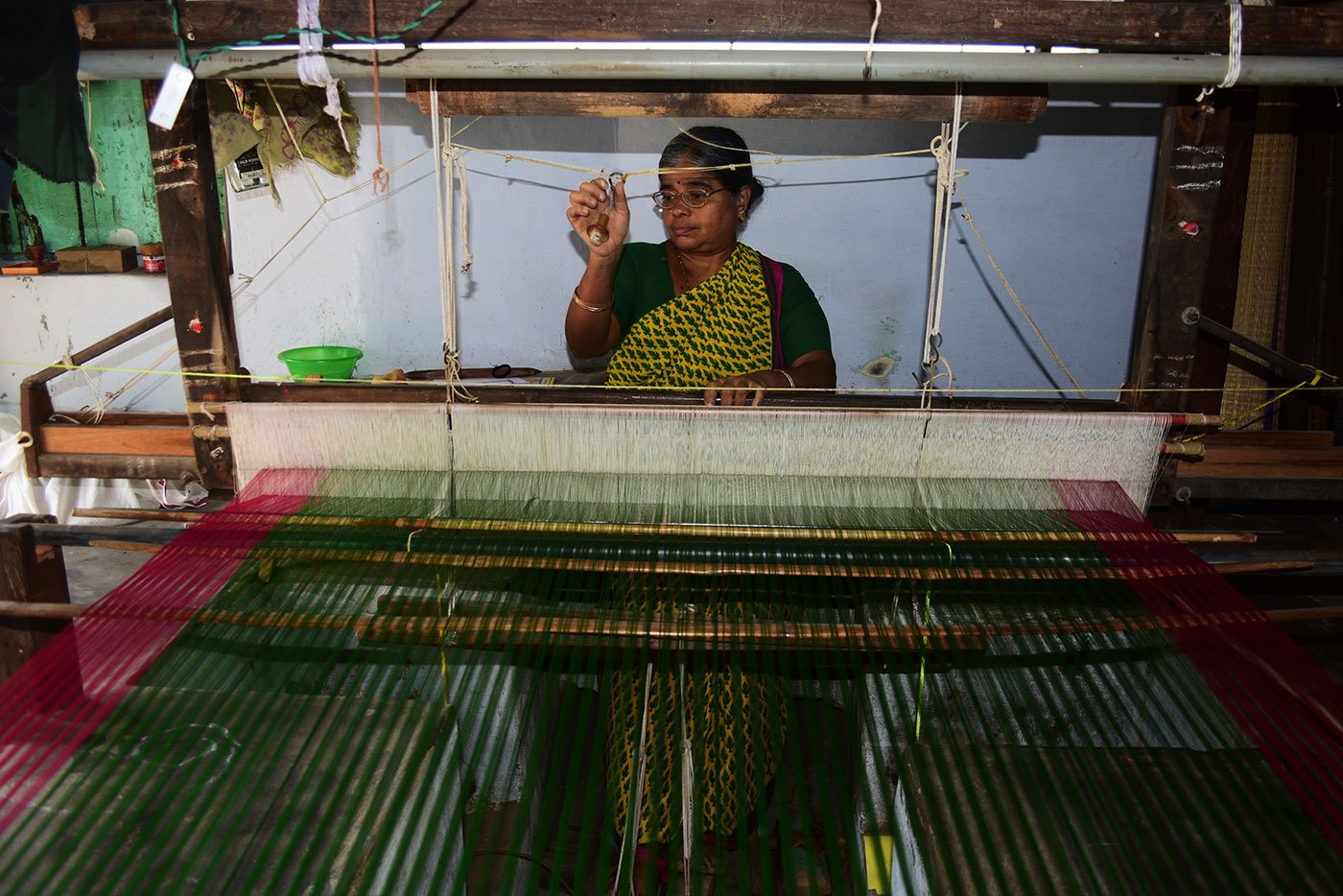
बाएं: सरस्वती ईश्वरायन ताना को करघे पर लगा रही हैं, जिसे पारंपरिक रूप से ‘ पावु पुनाइथल ’ कहा जाता है। यह काम आमतौर पर महिलाओं द्वारा किया जाता है, जो करघा पर हाथ से 4,500-4,800 लड़ियां लपेटती हैं। दाएं: 45 वर्षीय जयकांता वीरबतिरन एक साधारण साड़ी की बुनाई कर रही हैं, जिसे बाद में कढ़ाई से सजाया जाएगा। अधिकांश घरों में, करघे फर्श पर रखे जाते हैं और पैडल के लिए एक उथला गड्ढा बनाया जाता है
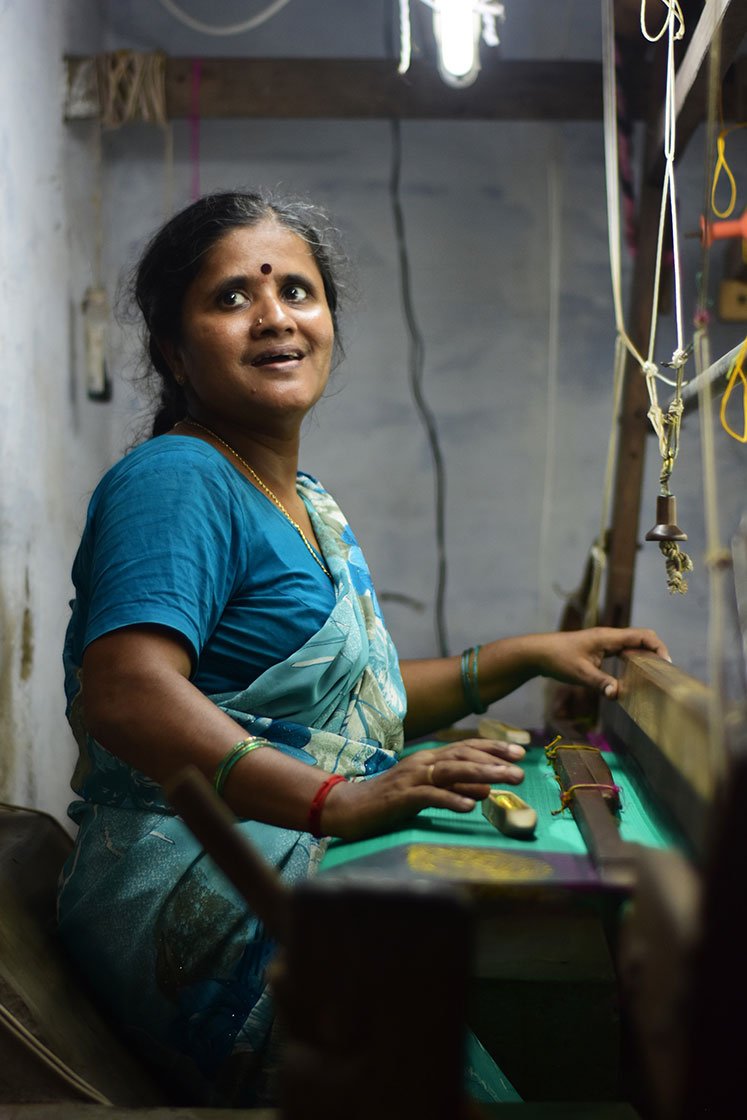
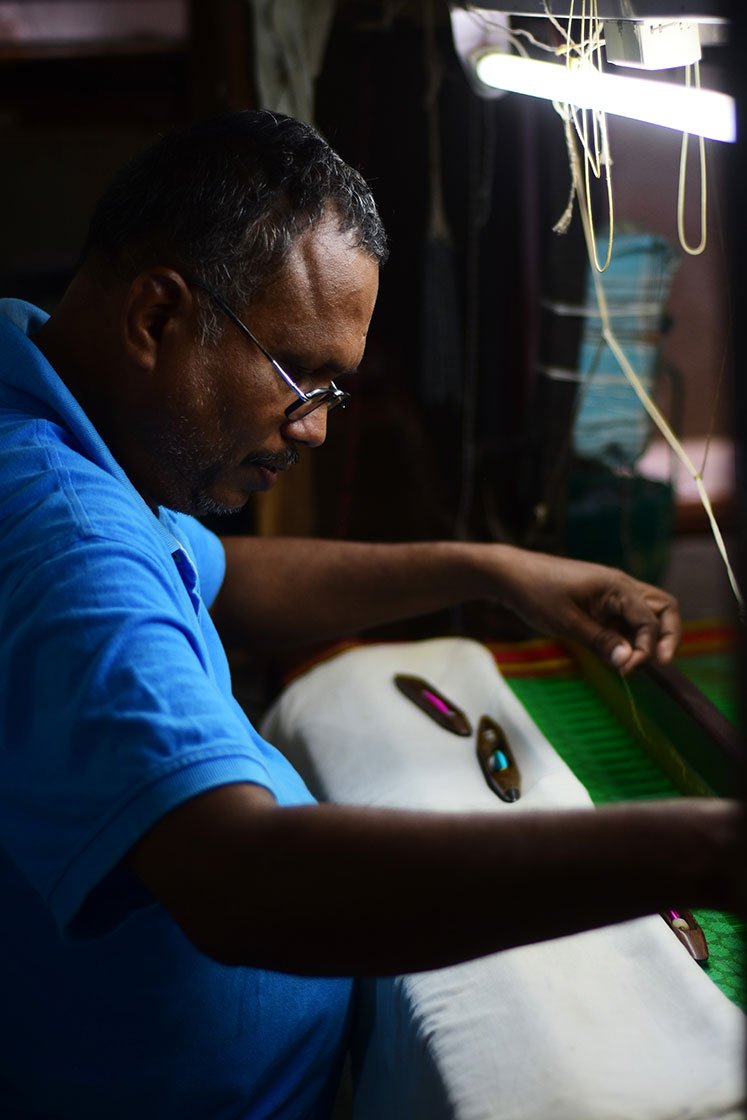
बाएं: निर्मला साड़ी की जटिल डिज़ाइनों के लिए कई शटल का उपयोग करती हैं। दाएं: देवसेनाथिपति राजगोपाल अपने काम पर
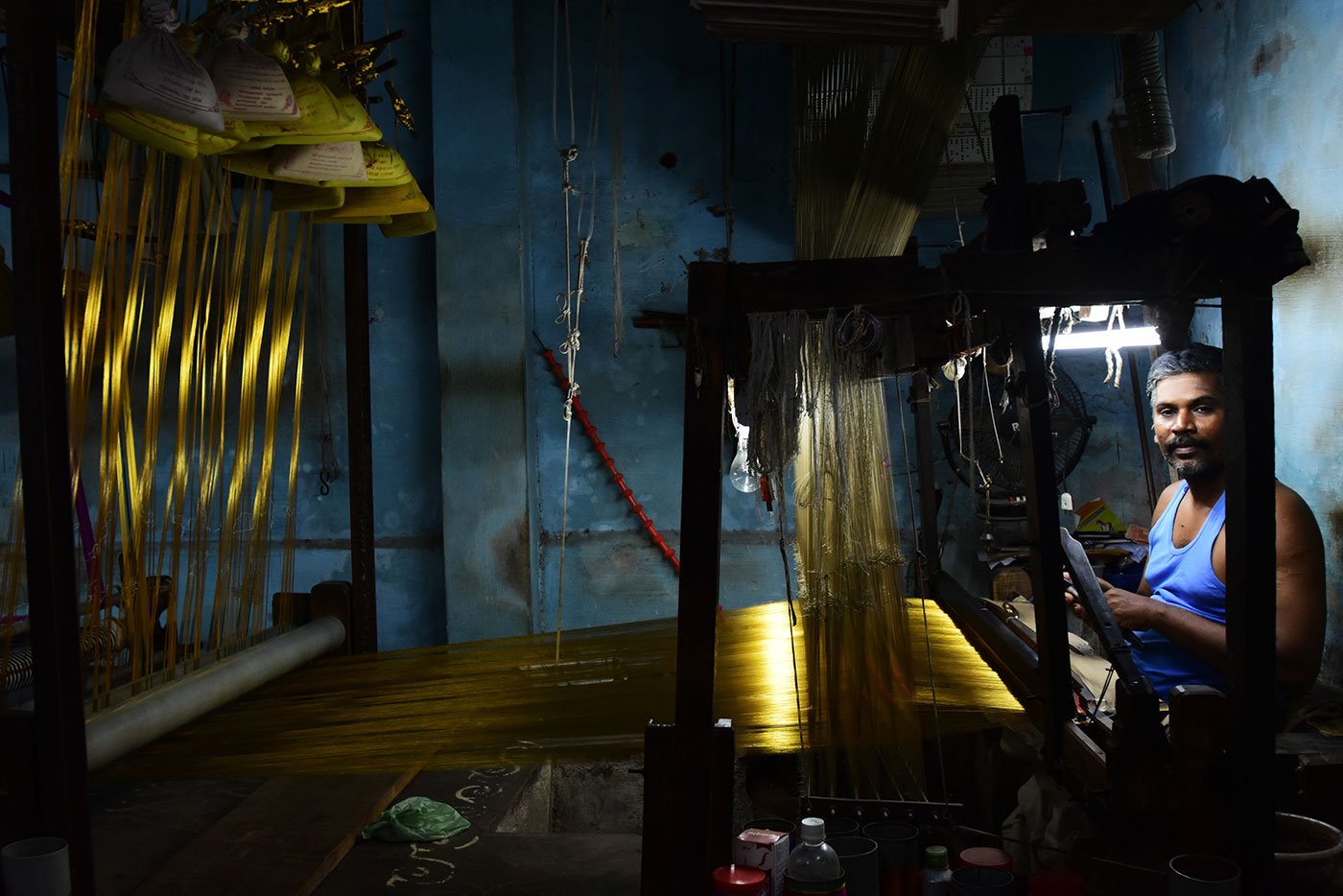
जगदेशन गोपाल साड़ी की बुनाई कर रहे हैं जो पूरी तरह से ज़री से बनी है – सोने के लेप वाले रेशम और चांदी के धागे से। ऐसी साड़ी का वज़न 2 से 5 किलो तक हो सकता है
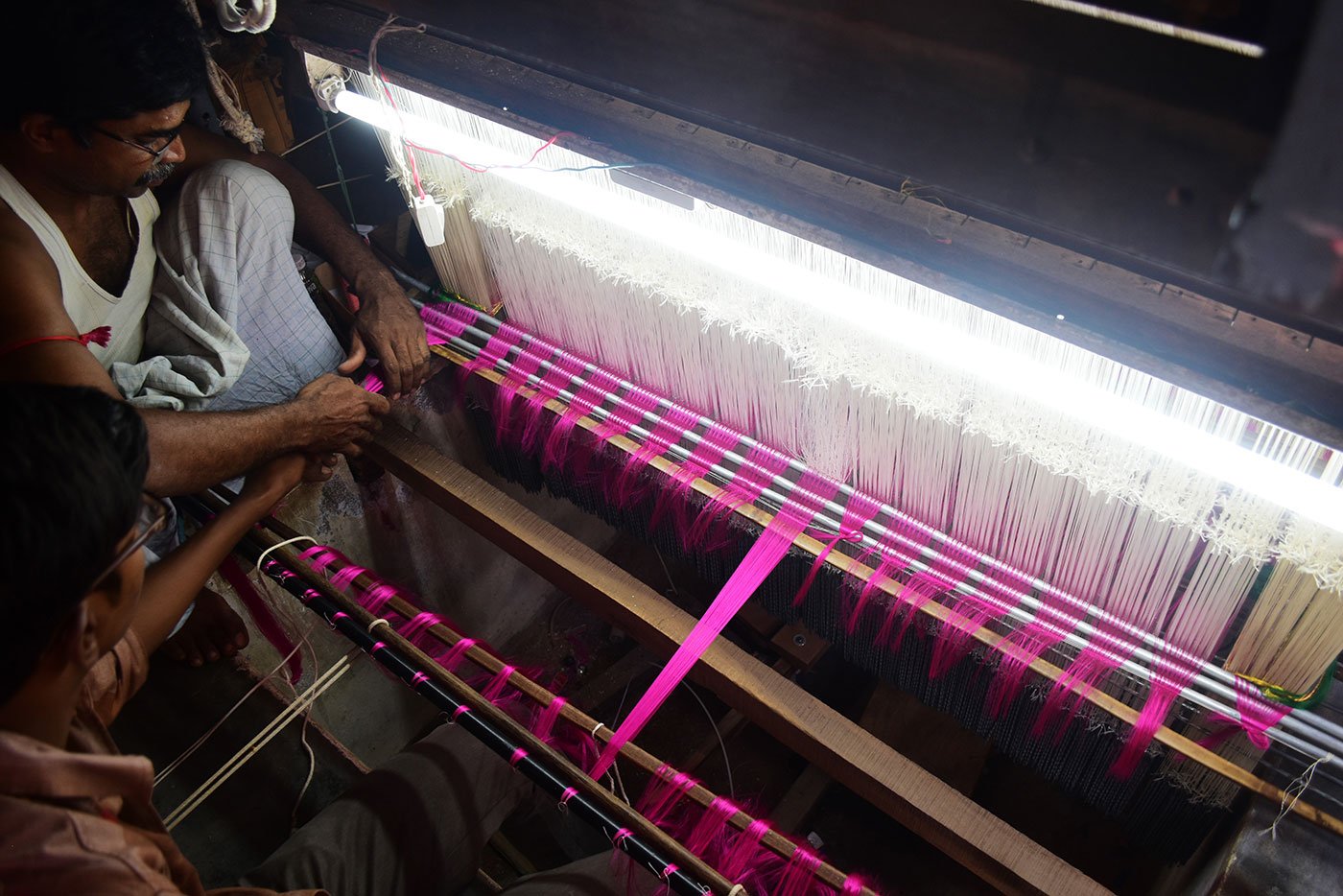
देवसेनाथिपति राजगोपाल साड़ी को अंतिम रूप दे रहे हैं और करघा से कपड़ा काट रहे हैं। उनका बेटा पास के अरणी शहर के हाई स्कूल में पढ़ता है और बुनाई में मदद करता है
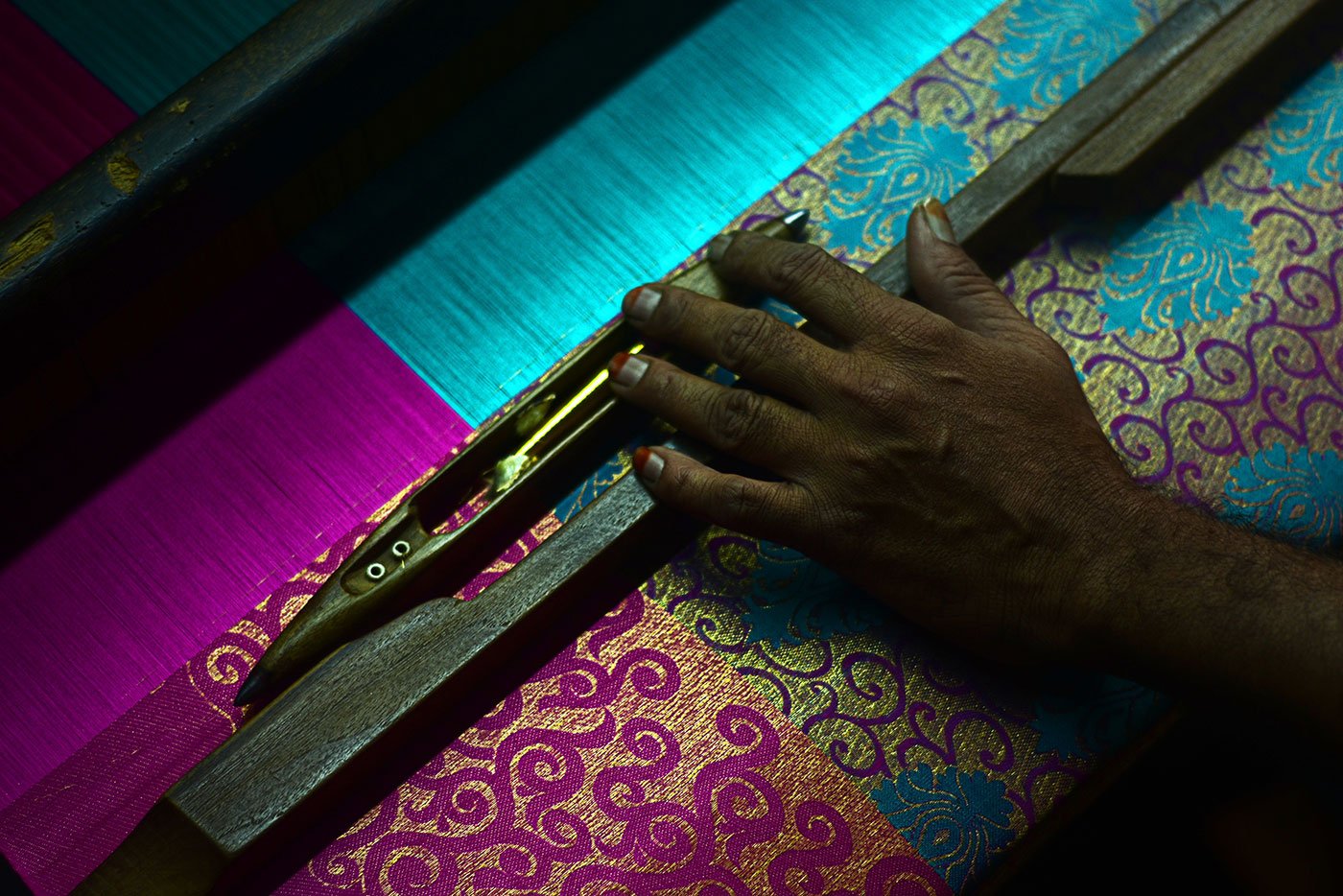
‘इसी से हमारा घर चलता है और हम इसे जाने नहीं देना चाहते हैं। अगर हम आराम करेंगे, तो इससे कमाई का नुकसान होगा,’ जगदेशन गोपाल कहते हैं
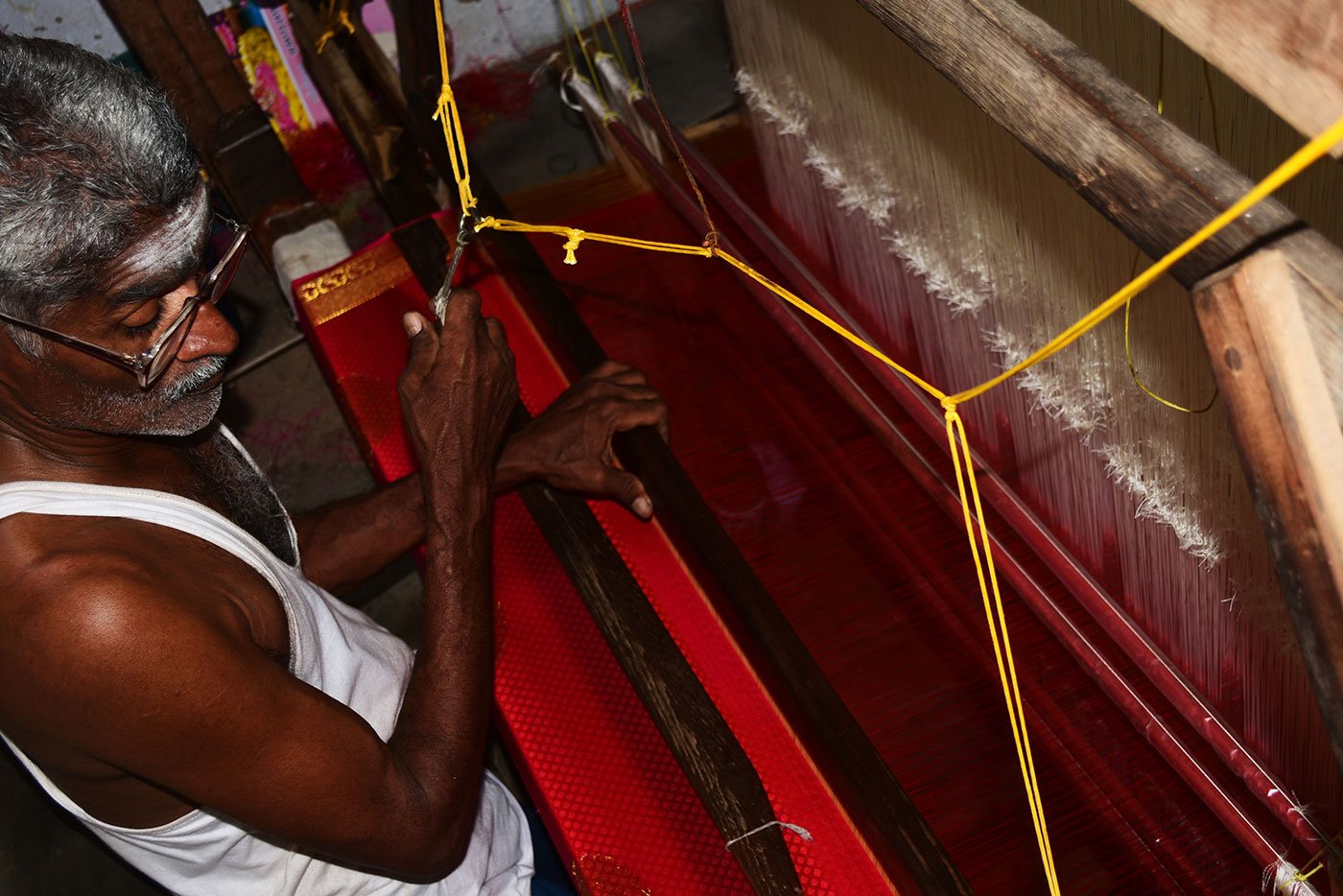
सुंदरम गंगाधरन और उनकी बेटी सुमति (फोटो में नहीं है) दोनों जीवनयापन के लिए बुनाई करते हैं
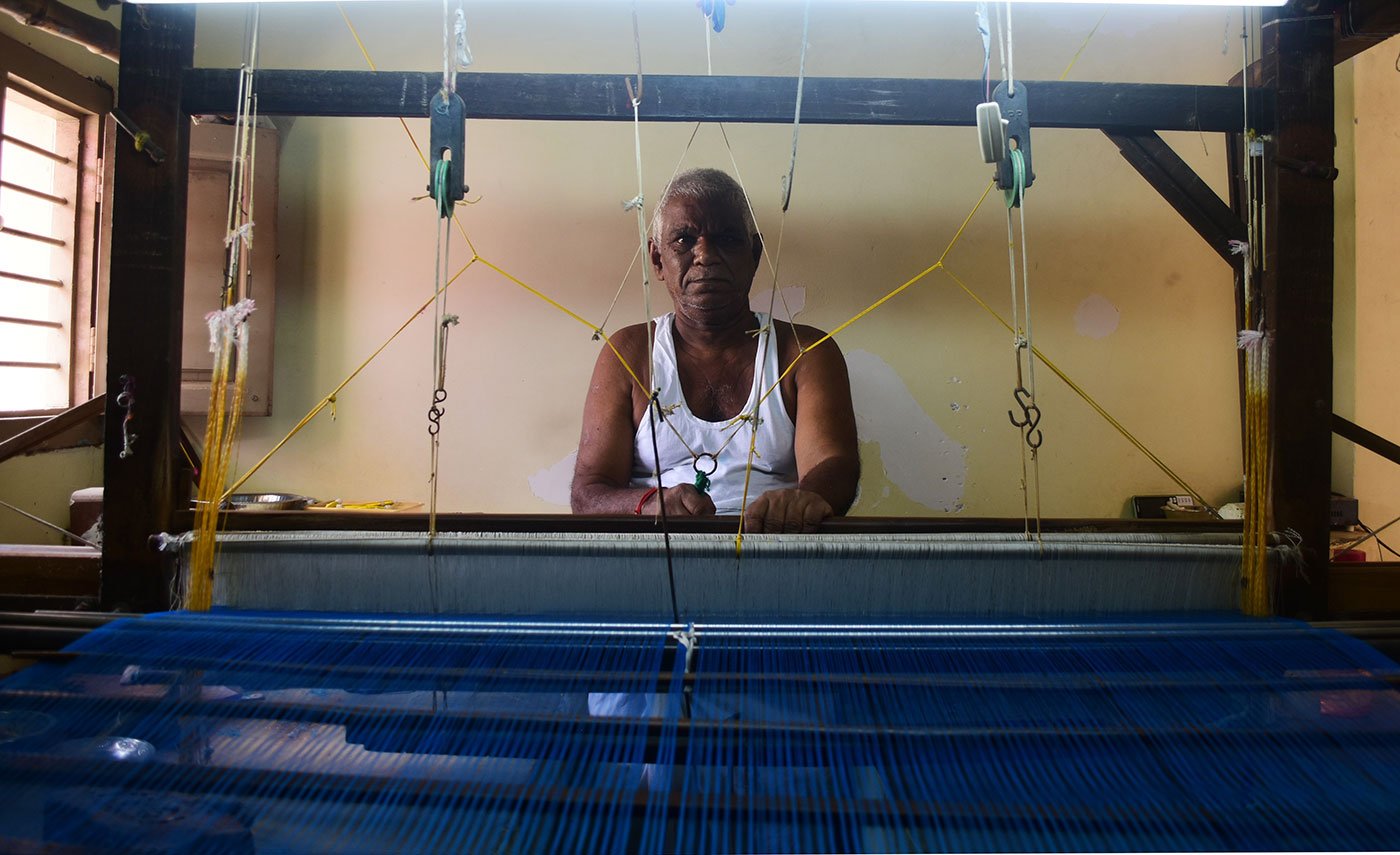
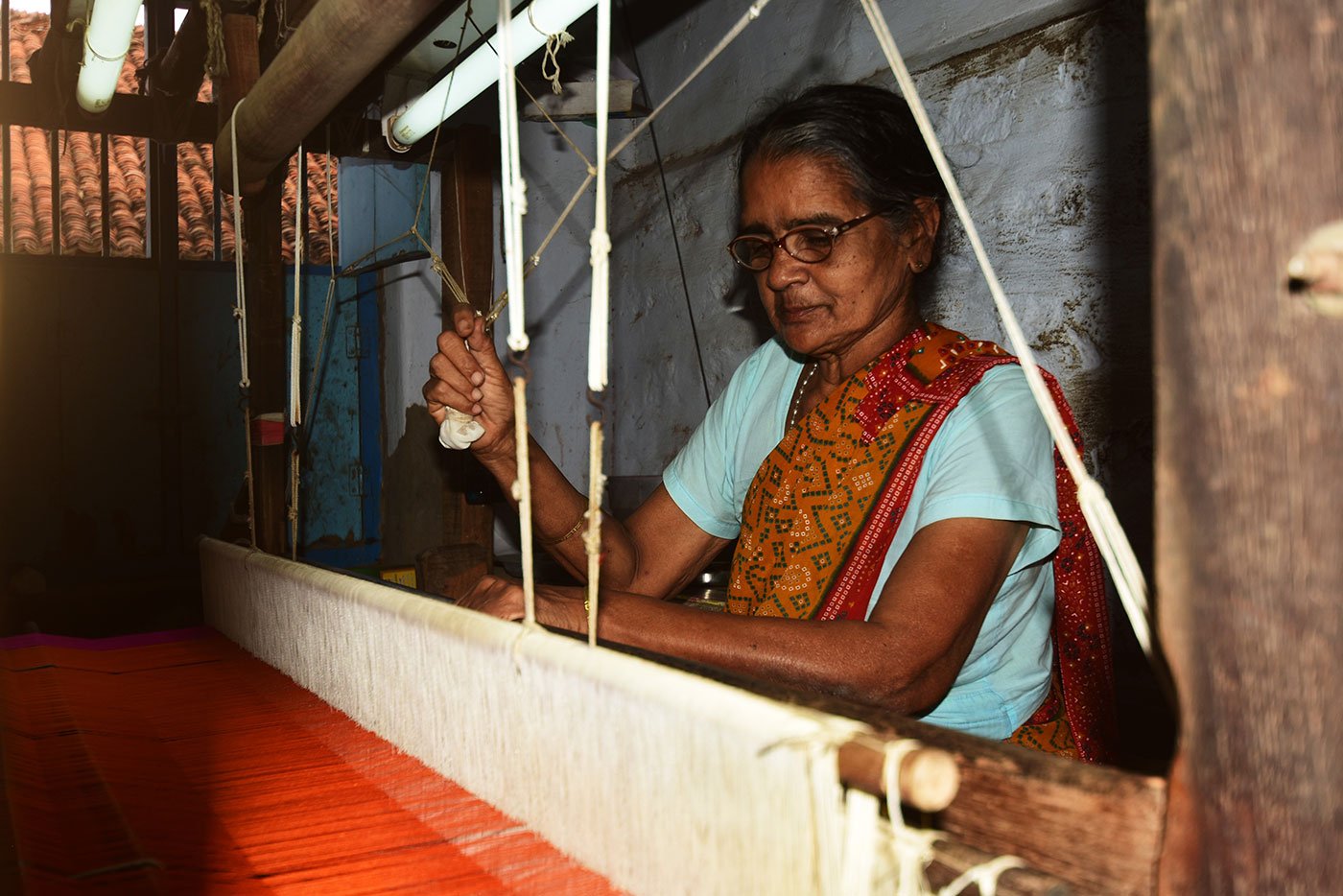
बाएं: 73 वर्षीय नरसिंहन धनकोड़ी आधी सदी से बुनाई कर रहे हैं और कहते हैं कि वह इस काम को जारी रखना चाहते हैं। दाएं: ‘ हम सप्ताह के सभी सात दिन काम करते हैं ’, 67 वर्षीय सरस्वती गंगाधरन कहती हैं
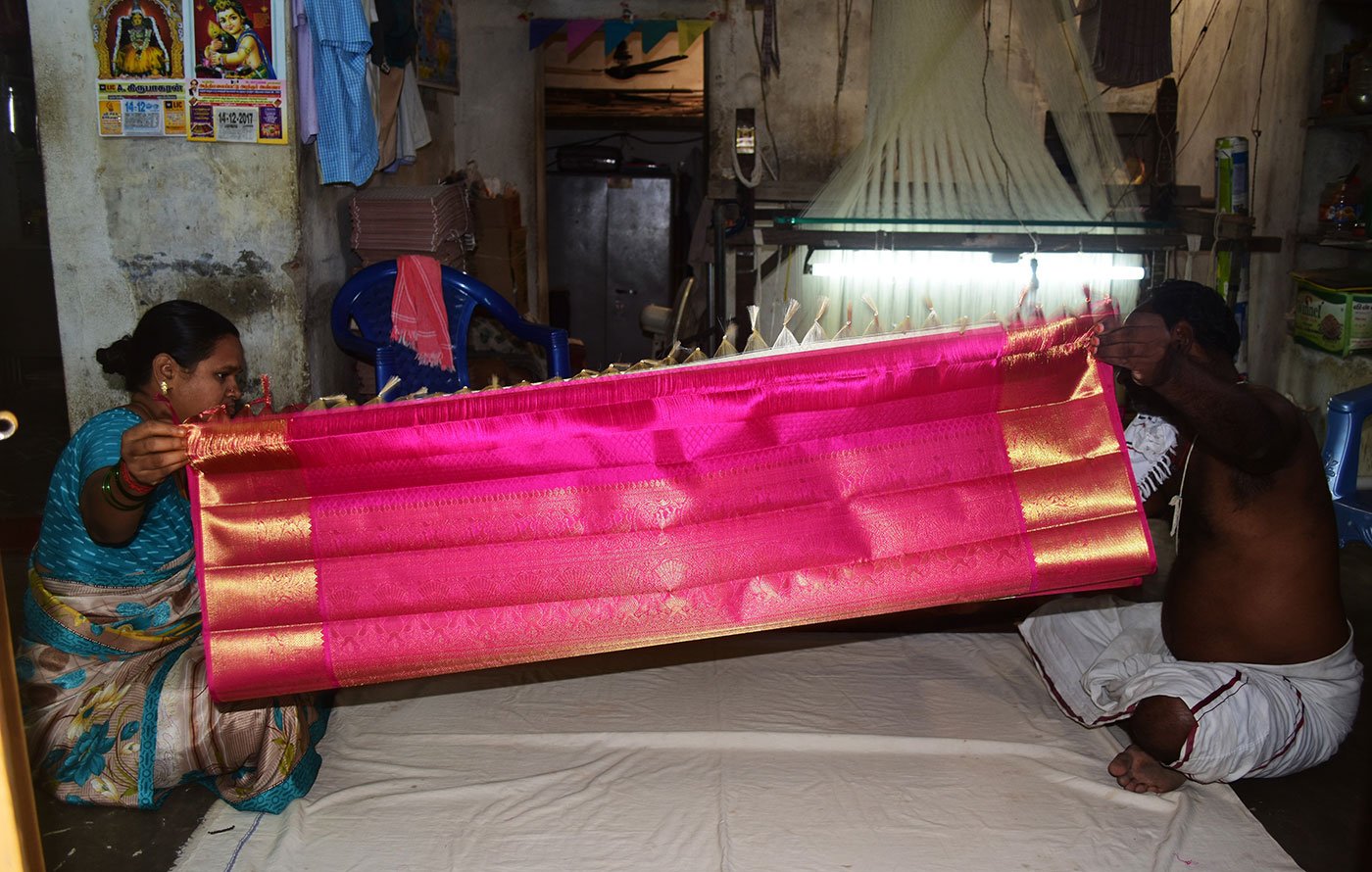
देवसेनाथिपति कोथंडपाणी और उनकी पत्नी गोमती तैयार साड़ी को एक बॉक्स में पैक कर रहे हैं। बुनकरों को अच्छी तरह मोड़ कर और बॉक्स में रखे गए आइटम को उन सहकारी समितियों तक पहुंचाना होता है जिससे वे जुड़े हुए हैं
हिंदी अनुवाद: मोहम्मद क़मर तबरेज़
